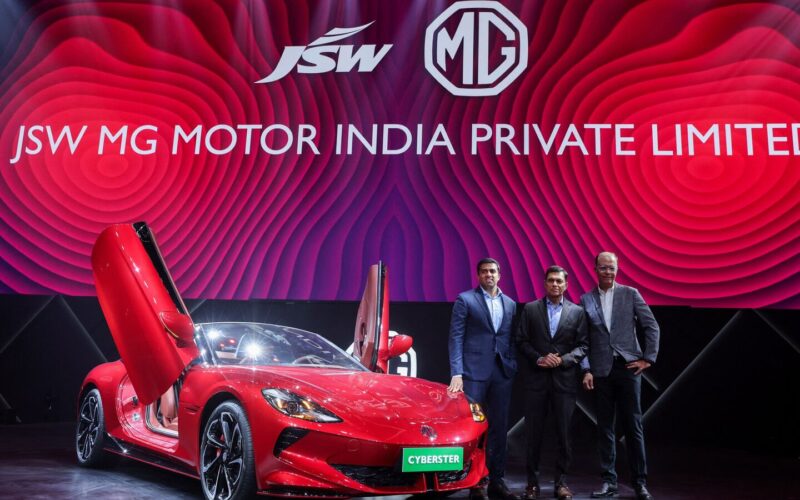MG Motors India: Can It Survive and Compete Without Its Parent Company?
When MG Motors entered the Indian automotive market in 2019, it did so with the backing of its Chinese parent company, SAIC Motor Corporation. Known for its tech-driven vehicles and a strong emphasis on electric mobility, MG Motors quickly established itself as a promising player in the competitive Indian automobile landscape. However, as speculation grows about MG Motors India severing ties with its parent company, many are left wondering: can it sustain itself as an independent entity? More importantly, can it effectively compete with established giants like Tata Motors and Mahindra & Mahindra?
MG Motors India: A Promising Start
MG Motors made an impressive entry into India with the launch of its Hector SUV. Branded as “India’s first internet SUV,” the Hector set new standards for connected car technology, offering features like voice commands, an embedded SIM, and over-the-air updates. MG followed up with a series of launches, including the ZS EV, one of India’s first mass-market electric SUVs, and the Gloster, a premium SUV packed with advanced driver-assistance systems (ADAS).
The brand’s strategy of blending cutting-edge technology with competitive pricing resonated well with Indian consumers. By focusing on SUVs, a segment experiencing rapid growth in India, MG Motors captured a significant market share within a short span.

The Parent Company’s Role
SAIC Motor Corporation provided MG Motors India with substantial financial backing, supply chain support, and access to advanced technologies. This partnership enabled MG to maintain aggressive pricing while offering high-quality features. The parent company’s expertise in EV technology also played a crucial role in MG’s early adoption of electric vehicles in India.
However, the company’s Chinese origins became a point of contention amid geopolitical tensions between India and China. Calls for boycotting Chinese products gained momentum, and MG Motors’ sales took a hit despite its efforts to position itself as a British heritage brand.
)
The Implications of Cutting Ties
If MG Motors India were to sever ties with SAIC, the immediate challenges would be daunting. The absence of financial and technological support from the parent company could lead to increased production costs, forcing MG to rethink its pricing strategy. Additionally, MG would need to establish independent supply chains, a task that could take years and require significant investment.
Without SAIC’s backing, MG’s ability to innovate and launch new models could also be compromised. The company might struggle to keep pace with competitors like Tata Motors and Mahindra, both of which have deep pockets, extensive R&D capabilities, and strong brand equity in India.
Competing with Tata Motors and Mahindra

Tata Motors: The EV Pioneer
Tata Motors has emerged as the undisputed leader in India’s electric vehicle market. With models like the Nexon EV and Tiago EV, Tata has established a strong foothold by offering affordable, reliable, and well-equipped electric cars. The company’s robust manufacturing infrastructure and vertically integrated supply chain give it a significant cost advantage.
Additionally, Tata’s strong focus on sustainability and innovation aligns well with India’s push for greener mobility. The company has announced ambitious plans to expand its EV portfolio, including the launch of more affordable electric models and investments in battery manufacturing.

Mahindra: The SUV Specialist
Mahindra & Mahindra has built its reputation as a leader in the SUV segment, with models like the Scorpio, Thar, and XUV700 enjoying immense popularity. The company is also making a strong push into the electric vehicle space, with its upcoming ‘Born Electric’ platform set to revolutionize the market.
Mahindra’s deep understanding of the Indian market, coupled with its focus on rugged and reliable vehicles, gives it a competitive edge. The company’s investments in advanced technologies, including ADAS and connected car features, make it a formidable competitor for MG Motors.\

MG Motors’ Path to Survival
For MG Motors India to sustain itself and compete effectively with Tata Motors and Mahindra, it must adopt a multi-pronged strategy. Here are some key areas the company should focus on:
1. Strengthening Local Operations
Without the backing of SAIC, MG Motors India will need to become more self-reliant. This includes localizing its manufacturing processes, sourcing components domestically, and investing in local R&D. Greater localization would not only reduce costs but also help the brand align with the Indian government’s ‘Make in India’ initiative.
2. Expanding the Product Portfolio
To compete with Tata and Mahindra, MG must diversify its product lineup. While SUVs remain its core strength, the company should consider entering other segments, such as compact cars and mid-size sedans, to cater to a broader audience. Launching more affordable electric vehicles could also help MG tap into India’s growing EV market.
3. Building Brand Trust
MG Motors needs to strengthen its brand image in India, emphasizing its commitment to the local market. This could involve increasing investments in customer service, launching localized marketing campaigns, and highlighting its British heritage.
4. Leveraging Partnerships
In the absence of SAIC, MG could explore partnerships with other global or domestic players to access new technologies and resources. Collaborations with Indian companies in areas like battery manufacturing, software development, and supply chain management could prove beneficial.
5. Enhancing After-Sales Service
A robust after-sales network is crucial for long-term success in the Indian market. MG Motors must focus on expanding its service centers, improving spare part availability, and offering competitive maintenance packages to enhance customer satisfaction.
The Road Ahead
The Indian automobile market is both challenging and rewarding. While MG Motors faces significant hurdles in operating independently, the company also has an opportunity to redefine itself as a truly “Indian” brand. By leveraging its early success and focusing on innovation, localization, and customer-centric strategies, MG Motors could carve out a sustainable future in India.
However, competing with stalwarts like Tata Motors and Mahindra will require more than just resilience. Tata’s dominance in the EV space and Mahindra’s stronghold in SUVs pose formidable challenges. MG must consistently innovate and deliver value to remain relevant in this fiercely competitive landscape.
In conclusion, MG Motors India’s journey without its parent company will be a test of its adaptability and vision. While the odds may seem daunting, the rapidly evolving Indian automobile market offers ample opportunities for those willing to innovate and persevere. Only time will tell whether MG Motors can rise to the occasion and emerge as a strong, independent player capable of competing with India’s automotive giants.










